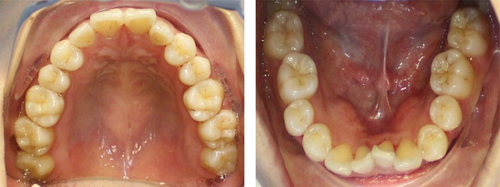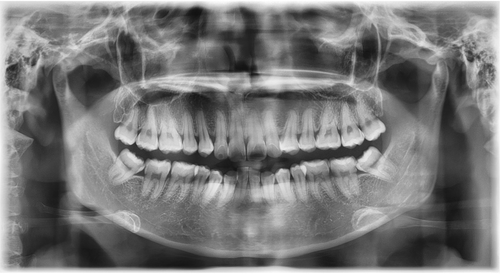Rare non-syndromic bilateral maxillary and mandibular permanent canine agenesis
Abstract
Oligodontia or absence of teeth such as the Canines is rare and is often accompanied with several other missing teeth. This condition may also be accompanied with morphological and growth related changes in the teeth and the maxillofacial complex. Complete agenesis of the permanent canines in the maxilla and the mandible is extremely rare and occurs in association with syndromic oligodontia. Non-syndromic absence of canines however, is extremely rare and has only been reported twice. Studies have shown that the incidence of missing canines is more in females. This report describes a sporadic case of congenital absence of maxillary and mandibular bilateral canines. The patient reported to the clinic with a chief complaint of crowding and wanted alignment. On intra-oral examination it was observed that the patient had all permanent canines missing with no prior history of extractions, crowding in both the arches and class I molars on both sides. With no other symptoms fixed orthodontic therapy was planned for the patient with premolars substituted for the canines.
1 CASE PRESENTATION
Exclusive congenital absence of both the maxillary and the mandibular canines is a sporadic occurrence, and to date, only a few cases have been reported that too with at least one canine.1 Bilateral maxillary canine agenesis is rare and ranges between 0.07% and 0.13%.2 This paper reports non-syndromic bilateral agenesis of permanent canines in the maxilla and the mandible, with only two such cases reported before.1, 3 A 25-year-old female patient reported to the clinic with a chief complaint of wanting to align her teeth.
On intra-oral examination, permanent canines were absent in both the maxillary and the mandibular arches, along with crowding (Figure 1). Other problems noticed during intra-oral examination were crowding in the anterior region in both the arches. The gingival contours in the premolars were normal with no signs of inflammation and the soft tissue in the area of the missing canines also appeared normal4 (Figure 2). The molar relations were class I on both the right and the left sides.


The patient reported no familial history of missing teeth, no prior history of extractions, or previous significant dental treatment. Suspecting that the patient may have multiple canine impactions, the patient was advised to get a panoramic x-ray done. On radiographic examination using the panoramic x-ray, it was observed that the permanent canines were absent in both arches (Figure 3). The bone trabecular pattern appeared normal with no radiopacity seen in the region of the missing canines. The patient was eventually advised to get fixed orthodontic treatment with canine substitution with the permanent first premolars. After orthodontic treatment the patient was advised enameloplasty to reshape the premolars to resemble permanent canines. The patient would be carefully monitored throughout the duration of the treatment to ensure no adverse outcomes.

Several reasons have been reported for missing canines, such as heredity, localized disturbances, syndromes, radiological effects, endocrine disorders, and prenatal infections. However, the exact cause of Congenitally absent permanent canines in most cases remains obscure.
AUTHOR CONTRIBUTIONS
AM: patient treatment: AM, MIK, and AH diagnosis and treatment planning AM, MIK and AH: manuscript preparation, AM & AH: review and editing.
ACKNOWLEDGMENT
The authors would like to thank the patient for giving consent.
CONFLICT OF INTEREST
The authors made no disclosures.
ETHICAL APPROVAL
Because this report involves no experiment, ethics approval is waived.
CONSENT
Written informed consent was obtained from the patient to publish this report in accordance with the journal's patient consent policy.
Open Research
DATA AVAILABILITY STATEMENT
Any data related to the manuscript can be provided on reasonable request.




